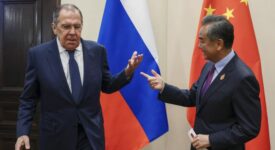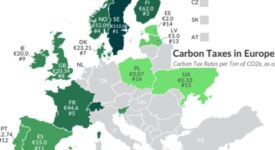Even if China’s non-tariff barriers remain high, they are lower than in the past. In fact, current complaints about unfair Chinese trade practices are actually complaints about the mismatch between the slow pace of economic opening and the very fast pace of modernization.
Even after reaching a temporary truce between the US President Donald Trump and his Chinese counterpart Xi Jinping, for the US, the biggest concern seems to be so-called forced technology transfer – that is, the requirement that foreign companies share their intellectual property with a domestic “partner” in order to gain access to the Chinese market. But this is a misnomer, at best, because companies that do not want to share their technology can always choose not to invest in China.
To be sure, unilateral US measures are indefensible under global trading rules. But some pushback conceivably could be warranted if the advanced economies – including representatives of the European Union, Japan, and the United States – are right that China has been engaging in unfair trading practices. Europe’s complaints are summarized in a new report issued by the European Union Chamber of Commerce in China. But, interestingly, few of those complaints are about China’s trading practices, namely tariffs.
With its accession to the World Trade Organization in 2001, China was forced to reduce its tariff protections by one-half. In the ensuing years, the average tariff rate applied by China has continued to fall, and now stands at less than 4%, though China does maintain an unusually high number of tariff peaks (that is, high tariffs for very limited categories of product).
Meanwhile, China enacted about the same number of new measures that liberalize trade with the US. Overall, then, China has not become more protectionist against the US; on the contrary, the opening process is continuing, albeit very slowly. By contrast, the US has enacted between 80 and 100 restrictive measures against China every year, and far fewer liberalizing measures. But, even if China’s non-tariff barriers, both formal and informal, remain high, they are lower than in the past. So, why are the US, Europe, and Japan pushing back now?
The answer lies in the increased competitiveness of Chinese producers. When Western companies had a near-monopoly on know-how and technology, their competitive edge more than compensated for distortions created by Chinese barriers to trade and investment. But, as Chinese enterprises have become increasingly serious competitors in their own right, Western countries’ capacity to bear the extra costs of non-tariff barriers has diminished.
In fact, per capita GDP in a number of Chinese provinces with a combined population of over 100 million is similar to that of advanced countries (around $30,000 per capita at purchasing power parity). Of course, the national average is much lower (about one-half), as overall productivity is much lower, and the Chinese authorities have to calibrate policies for their entire vast country. But, for the outside world, the high-productivity regions are what matters.
If we are to avoid further escalation of tensions, the West and China must acknowledge each other’s perspectives. Ultimately, however, foreign pressure will have little effect on China’s massive and powerful economy. The real question for China lies at home: Do enduring distortions and barriers to investment really serve the development of the country’s lagging provinces?
‚Are China’s Trade Practices Really Unfair?‘ – Op-Ed by Daniel Gros – Centre for European Policy Studies / CEPS.
(The Policy Paper can be downloaded here)







